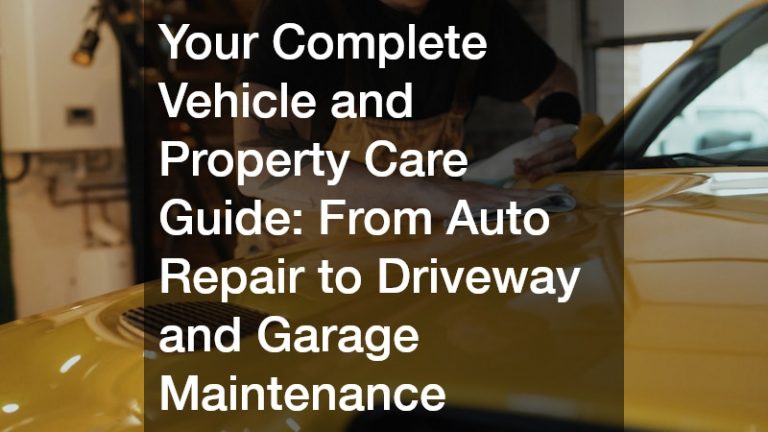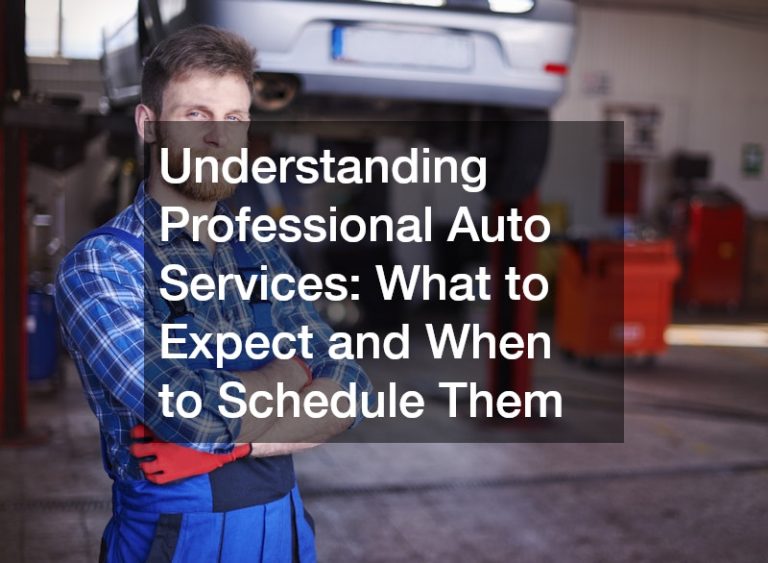
If your car is shaking while driving, it can be alarming—and sometimes dangerous. While some vibrations are harmless, others signal a serious issue. In this guide, we’ll break down the most common causes of car shaking, how to tell what’s wrong, and when to take action. You don’t need to be a mechanic to understand this—just a driver who wants answers.
Is It Normal for a Car to Shake While Driving?

A small vibration can be normal on certain road surfaces, especially at high speeds. However, if you notice shaking that’s new, getting worse, or happening regularly, it’s time to investigate. Car vibrations often point to a mechanical problem that needs attention.
Common Reasons Your Car Shakes While Driving
Here are some of the most common causes for a shaking car—and how you can fix or avoid them:
1. Unbalanced Tires
What It Is: When your tires are not balanced correctly, one or more may rotate unevenly, causing the car to shake.
Signs:
- Shaking starts at high speeds
- Vibration mainly felt in the steering wheel
Fix: Get your tires balanced at a tire shop. Most mechanics can do this quickly and inexpensively.
2. Wheel Alignment Issues
What It Is: If your wheels are misaligned, they don’t point in the right direction. This can lead to uneven tire wear and shaking.
Signs:
- Car pulls to one side
- Tires wear unevenly
- Steering feels loose or shaky
Fix: Schedule a wheel alignment. It improves handling and extends tire life.
3. Worn or Damaged Tires
What It Is: Old, bald, or damaged tires can’t grip the road well and can cause your car to shake, especially at high speeds.
Signs:
- Visible wear or bald spots
- Cracks or bulges on the sidewall
- Shaking gets worse the faster you go
Fix: Inspect your tires regularly. Replace any that are worn out or damaged.
4. Brake Problems
What It Is: Brake rotors can become warped over time, especially from frequent hard braking or heat. This causes shaking when you apply the brakes.
Signs:
- Car shakes only when braking
- You feel vibrations in the brake pedal
Fix: Have a mechanic check your rotors and brake pads. You may need to resurface or replace the rotors.
5. Engine Troubles
What It Is: Engine problems like misfiring cylinders or worn spark plugs can cause the whole car to shake while driving or idling.
Signs:
- Shaking even when stopped
- Poor fuel economy
- Warning lights on the dashboard
Fix: Get a diagnostic scan or tune-up. Replacing spark plugs or ignition coils may solve the issue.
6. Suspension or Steering Issues
What It Is: Loose or damaged suspension and steering components can cause shaking, especially when hitting bumps or turning.
Signs:
- Clunking noises
- Loose steering
- Uneven ride
Fix: Have a mechanic check your shocks, struts, and ball joints. Replacing worn parts can restore a smooth ride.
7. Axle or Driveshaft Damage
What It Is: If your car was recently in an accident or hit a curb hard, the axle or driveshaft may be bent. This can cause major shaking.
Signs:
- Shaking worsens with speed
- Loud noises when driving
- Trouble accelerating
Fix: This is a serious issue. Visit a mechanic as soon as possible for inspection and repair.
8. Loose or Worn Wheel Bearings
What It Is: Wheel bearings help your wheels spin freely. If they’re worn out or loose, you’ll feel shaking and hear noise.
Signs:
- Humming or grinding noises
- Shaking that worsens while turning
Fix: A mechanic can replace the faulty wheel bearing. Don’t delay—this can affect your ability to steer.
9. Engine Mount Failure
What It Is: Engine mounts hold your engine in place. If they’re broken, your engine can move too much and cause shaking.
Signs:
- Vibrations while accelerating
- Loud clunking noises
- Engine looks like it moves when revving
Fix: Engine mounts will need to be replaced. This is best done by a professional.
What to Do If Your Car Starts Shaking

If your car starts shaking while driving, it’s important to act quickly and safely. Shaking can be caused by a number of mechanical problems, and ignoring it can lead to more serious damage—or even an accident.
Here’s what you should do:
1. Slow Down Safely
If the shaking is severe, reduce your speed gradually. Don’t slam on the brakes.
- Turn on your hazard lights.
- Pull over to a safe spot, like the shoulder of the road or a parking lot.
- Avoid sudden movements with the steering wheel or brakes.
2. Look & Listen
Try to identify when and how the shaking occurs. This can help you or your mechanic narrow down the cause.
Ask yourself:
- When does the shaking happen? While accelerating, braking, or turning?
- Does it occur at a certain speed? For example, only above 60 mph?
- Do you hear any unusual sounds? Clunking, grinding, or squealing noises?
Paying attention to the details can make a big difference in diagnosing the problem.
3. Inspect the Tires
Your tires are often the first place to look when your car shakes. Pull over and check:
- Tread Wear: Is it uneven or worn down on one side?
- Tire Pressure: Use a tire gauge to make sure each tire is properly inflated.
- Flat Spots or Bulges: These could be signs of internal tire damage.
- Wheel Lugs: Make sure the lug nuts are tight.
Driving on damaged or poorly balanced tires can cause intense vibration and unsafe conditions.
4. Check the Steering & Suspension (If Safe)
If you’re familiar with basic car parts, inspect these systems briefly:
- Steering Wheel: Is it loose or unusually stiff?
- Suspension Components: Look for visible wear, leaks, or broken parts under the vehicle.
- Shocks & Struts: Worn-out suspension parts can cause shaking, especially over bumps.
Note: Only do this if the car is parked safely and the engine is off.
5. Examine the Brakes
Shaking while braking often points to an issue with your braking system.
- Warped Brake Rotors: These can cause vibration when you step on the brake pedal.
- Worn Brake Pads: These can also lead to uneven braking and shaking.
- Brake Calipers: If these are sticking or damaged, they may cause pulling or shaking during stops.
Brakes are a critical safety feature, so don’t delay repairs if this is the cause.
6. Don’t Ignore the Warning Signs
Even if the shaking goes away, it’s still important to get your vehicle inspected. Intermittent problems can grow worse over time.
Some issues that cause shaking include:
- Unbalanced or Misaligned Wheels
- Engine Misfires or Spark Plug Issues
- Worn CV Joints or Axles
- Transmission or Drivetrain Problems
Leaving these unresolved can lead to poor performance or further mechanical damage.
7. Schedule an Inspection
If the issue isn’t immediately obvious or continues after checking the basics, visit a certified mechanic.
- Explain the symptoms clearly: Describe what the car does, when it happens, and how it feels.
- Mention any recent work done: Tire changes, brake service, or suspension repairs.
- Don’t wait: Driving a shaking car can be dangerous for you and others on the road.
A mechanic can run diagnostic tests, perform a road test, and inspect the undercarriage thoroughly.
When to See a Mechanic
Some problems can be fixed quickly, like balancing tires or replacing spark plugs. But if you’re unsure—or if your car is shaking badly—don’t wait. Delaying repairs can lead to more damage and costlier fixes later.
Preventing Car Shaking
To avoid problems in the future, try these tips:
- Rotate Tires Regularly: Every 5,000 to 8,000 miles
- Balance & Align Tires: At least once a year or if handling feels off
- Brake Checkups: Every 10,000 to 15,000 miles
- Suspension Inspection: Annually or after rough road impacts
- Engine Tune-Ups: Based on your vehicle’s manual (usually every 30,000 miles)
FAQ: Car Shaking While Driving
Q: My steering wheel shakes when I brake. What’s wrong?
A: Most likely, your brake rotors are warped. Have them checked or replaced.
Q: The shaking only happens at high speeds. Is that tire-related?
A: Yes, it’s often caused by unbalanced or worn tires.
Q: Can a shaking car be dangerous?
A: Yes. It could lead to loss of control or more severe mechanical issues.
What If You’re on a Road Trip or Traveling?
If your car starts shaking while on a long trip, it can be nerve-wracking—especially when you’re far from home. First, find a safe place to pull over. Inspect your tires for any damage, and check for visible signs of trouble like a loose wheel or smoke. If you’re unsure, it’s best to visit a nearby auto shop or call roadside assistance.
Before heading out on a long drive, it’s a good idea to have your vehicle inspected and tires balanced. Bring an emergency kit with tools, a spare tire, and contact info for local mechanics along your route. Being prepared can help you handle unexpected car trouble with less stress.
Final Thoughts
Car shaking while driving is a common issue with many possible causes—from tire problems to engine trouble. The good news? Most of these problems can be diagnosed and repaired quickly if caught early. Pay attention to when and how the shaking happens, and don’t hesitate to see a mechanic if you’re unsure. Staying proactive keeps you—and your passengers—safe on the road.





